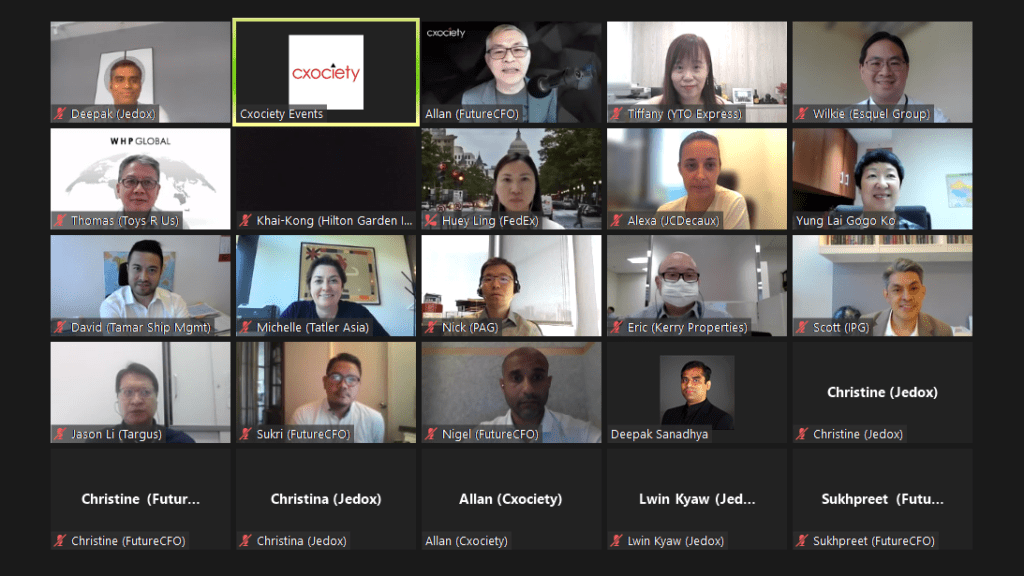Traditional FP&A processes provide a structured approach to budgeting, planning, forecasting, and reporting so that the finance team can deliver analysis that helps senior executives understand the financial impact of their decisions.
However, other functions in the business are making plans and taking actions that can also affect an organization’s financial posture and future direction.
The result is less than optimum operations with the organisation reacting to changes rather than riding the opportunities.
At a roundtable attended by 18 organisation leaders, including CFOs, participants discussed how they are managing their FP&A processes and the various approaches in budgeting, planning, forecasting, and reporting by the finance teams to senior management and how analysed data can impact management decisions.
More significantly, the participants discussed the key factors that affect business planning and how taking action and the speed and efficacy with which the management responds can significantly affect an organisation’s financial position and direction.

In this Futureproofing Finance series, FutureCFO in partnership with Jedox, the discussion is centred around the challenges, opportunities and trends facing CFOs and the FP&A team. In this series' theme: Making FP&A agile, relevant and reliable, we look at how companies can use XP&A to create a more unified picture of the financial impact of departments’ and business units’ operational plans, strategies and activities.
Gartner says Extended Planning & Analysis or xP&A is the evolution of planning, combining financial and operational planning on a single composable platform. Extending beyond traditional FP&A solutions focused solely on finance, the roundtable explores the strategies across various enterprise planning domains such as workforce, sales, operations, and marketing. Using xP&A to coordinate data, people, processes, and business plans within a single platform, providing a comprehensive view of the business.
One of the first questions raised at the roundtable examined how finance leaders are dealing with low automation adoption rates in Asia Pacific, specifically in responding to disruption.
The question examines how dependent or vulnerable business operations are in relation to unexpected forces that change, for instance the Covid pandemic.
Automation challenges - consistency and compatibility
David Tsim, group finance director of Tamar Ship Management commented that while most employees are heavily reliant on Excel spreadsheets, the real challenge depends on who you engage.
“In my industry, technology and safety teams have their own systems. We want to ensure that the systems are singing and dancing together and we have had various levels of success.”
David Tsim
He explained that automating from start to finish would be a ‘dream’. However, the goal is for all the systems to not work in silos, instead interfacing with each other in a seamless way.
Venkateswaran Sundararaman, CFO from Mason Global said that his team has tried to mitigate the connectivity issues of banking systems with some degree of automation. With his clients, like HSBC, he has to interface with external partners by integrating their systems with their own domestically developed systems. This presented a problem, particularly when dealing across different geographical boundaries.
He said, "It causes some handicaps when we collaborate with suppliers. Automation is challenging when it comes to crossing borders. There are security issues, making it hard to adapt to the total integration where we have to integrate with our supplier base."
Most participants shared the same sentiments regarding compatibility issues and placed emphasis on investing in a system that is compatible and has some established policies and procedures.
Digital transformation challenges
Discussing their journey in the organisation’s digital transformation, Eric Kwok, manager finance and accounts from Kerry Properties Limited, said that whenever there was a change or migration to a new system.
They had to do some change management and now with different systems, he needed to work closely with the IT department to integrate as much as possible. However, he admitted that not all processes are easily automated and that, “there is still some data which we have to collect manually.”
Commenting on the challenges of technology adoption, Sundararaman explained that his customers often get confused during this journey of transformation and automation. He opined that transformation does not replace anything, but what is more important was to embrace technology by making people feel more comfortable with taking away manual exercises, making them more comfortable with what they are doing.
“Transformation needs to be smooth enough that they are comfortable with adopting it. It will take time and it has to go through a journey. Data should start working for you rather than you working for the data.”
Venkateswaran Sundararaman
Some of the other questions included their respective organisation’s approach to generating out-of-cycle forecasts.
Out-of-cycle forecast - manual or calibrated?
Citing the covid pandemic as a live example of an out-of-cycle situation, he said, “No one predicted that it was going to happen. How are you gonna look at the simulation parameters to see a change of trend in the market?”
Mason Global’s Sundararaman also was sceptical about forecasting budgets at the start of the year, because there may be changing circumstances that would alter predictions. He said that while most employees make an effort, it may seem futile if there are constantly changing targets that the initial projections end up ‘unrealistic’. He said, “You cannot make a budget at the beginning of the year, and then during the years, so many circumstances have changed.”
Parallel to the discussion, an online poll by FutureCIO also revealed that only seven per cent of the respondents say that they can forecast demand continuously.
Ko Yung Lai, Gogo, deputy general manager of Yue Xiu Enterprises (Holdings), who works from their headquarters shared that their mandatory annual submission was communicated through a PowerPoint presentation.
“If they are not performing in accordance with the original forecast they have to explain how they are going to achieve their targets etc. We ask them to revise forecasts as early as possible - it’s hard but that’s what we have to do as an accountant.”
Ko Yung Lai, Gogo
However, Kwok commented that his organisation has adopted a more regularised and formal approach to financial reporting. He said, “We have a system in the cycle, we ask the admin to create a version in the system and store it. Reporting timelines, operations team to fill the data before generating the report, so there has to be some effort in the forecast.”
During the pandemic, Conrad Hong Kong had to change its operations to serve as a Quarantine hotel. He explained that due to Covid, the whole budget forecast became irrelevant. They had to report on the revenue and expenses and what they needed to do to understand the business, change their business strategy and survive. Weekly forecasts to manage expenses were needed to manage cash flow as well as another report done quarterly.
Khai Kong Leong, its financial controller, said that his organisation adopted a more systematic way of forecasting by submitting actual financial statements into the system, where some intelligence is incorporated to make it easier to forecast.
“We have streamlines on certain expenses, we have a rolling forecast every month - to ensure how we meet the budget where we are and how far are we from the target - at the end of the day, we need to be accountable for the kind of strategies we need to take to change. It's not about the figures, but it is the strategy six months down the road.”
Khai Kong Leong
Sundararaman explained that the financial reports were not necessarily restricted to excel based spreadsheets. There is new technology being used, AI and machine learning are also employed as part of the tools organisations use. There was also a “No-Touch forecast” report - given by Salesforce consultants on where the organisation is heading. As advised by one of their researchers, the ideal forecast should not deviate more than 2.8%.
Another key point of the roundtable included assessing the extent that participants believe advanced reporting and forecasting tools to be essential for effective xP&A.
Data connectivity is key
Michelle Lombard, chief financial officer for Tatler Asia Group, said that it is absolutely vital for business operations to be connected with data so that the more accurate the forecasting becomes - even when it is a ‘business as usual’ situation.
She commented that the more we have systems connected to data, the faster the management and decision-makers can respond to disruption. Because we are moving into the age of technology, there is going to be disruption across the entire business ecosystem. Hence, systems need to be connected with both external and internal data - the better you are able to respond to disruption.
“We need to really be ready to use real-time data in a meaningful way. That includes having the right people, systems, and analysis in place to make use of all that information. Otherwise, having everything connected is not going to mean anything.”
Michelle Lombard
Tatler Asia’s Lombard also stressed the need for tools to get more sophisticated and in enabling better connections, “As a business, we need much more powerful tools to use, to make it easier in dealing with masses of data.”
Conclusion
There needs to be better collaboration across the business infrastructure. However, it is also important to make the business integration not only about partnering but communicating the financial impact of the decisions by involving various departments within the company.
To become agile to orchestrate strategic business decisions, the necessary software tools are important for analysing and making sense of the data that is gathered. A salient observation included the changing role of finance in playing a more strategic role as a business partner from an organisation growth perspective.
The pace of technology also has a bearing on how organisations respond to disruption. However, it becomes important that the CIOs and IT department heads are involved in the FP&A process and incorporate the right resources as a holistic way to articulate the impact of disruption back to the management to achieve business resilience.


